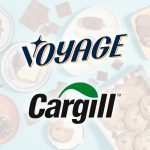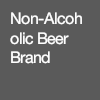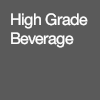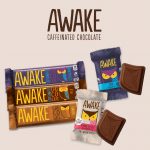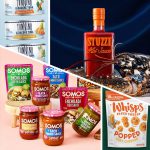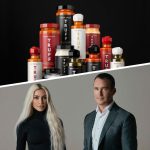Tea Trouble: How Formulations Meet Packaging Needs, Not Consumers’

As reformed soda drinkers continue to look for healthier ways to get their caffeine fix, the world ready-to-drink (RTD) coffee and tea market is set to grow from $69 billion in 2011 to $125 billion in 2017–just under 11 percent annual growth–according to a analysis by research firm MarketsandMarkets. The result is the second-most consumed beverage in the world after water, and for good reason: It is well established that tea is loaded with antioxidants and compounds that can boost endurance, help protect against cancers and heart disease, increase exercise stamina and more, notes Time magazine.
With its general halo of health and the allure of abundant beneficial antioxidants, RTD tea is particularly well positioned for continued growth in the U.S. among consumers looking for better for you beverage choices, according to IRi projections. Average annual tea consumption in North America grew from 11.4 liters per person in 2005 to 15.2 liters in 2010 and is expected to reach 17.7 liters by 2015, notes a Euromonitor Compass 2011 report.
Yet despite recent growth–and tremendous potential for further growth, particularly at the premium end–most of the tea packaged in the U.S. is quite different than the simple “tea leaves plus hot water” recipe brewed at home or commonly found at tea shops. While tea is naturally a low-acid beverage, most of it is produced in high-acid plants where the soft drinks are produced. Supporting tea production at these sites requires manufacturers to make significant modifications to the simple “tea leaves plus hot water” product to meet federal regulations for products manufactured in a high acid plant.
All tea is equal in the sense that every type—from black, white and green to the more exotic blooming or flavored varieties—is created by steeping leaves from the plant Camellia sinensis with herbs, flowers or fruits, individually or in blends, in hot water.
In its purest form, tea’s acidity ranges from neutral to strongly alkaline. But to meet federal regulations for bottling in the more prevalent high-acid plants alongside sodas and juices, manufacturers must first alter the pH of the naturally alkaline tea, which most do by adding ascorbic acid. To reduce the bitterness caused by this acid, companies commonly add sugar or artificial sweeteners—which alleviate the harsh taste but can also change tea’s flavor. So iced tea formulations commonly found on the grocery shelves are often modified with ascorbic acid and large amounts of sugar.
Yet IRi projects that growth for these popular “mainstream” RTD teas will be flat through at least 2015, while robust growth is expected in the premium and super-premium markets in the U.S. and Canada.
Companies are creating and marketing innovative new teas in varieties that range well beyond green, white and black, with some incorporating nutraceutical ingredients such as flowers, herbs and roots. In response, experts project RTD tea’s market share at the super-premium end to climb three points, from 6.8 percent in 2010 to 9.8 percent in 2015 (despite sporting higher prices) in the $3.5 billion U.S. market.
Consumers who gravitate to high-end tea products want to taste the subtle differences between tea varietals, which makes the acid-plus-sugar formulation problematic. Tea aficionados also tend to be more health-conscious and pay greater attention to sugar and other additives on the label. As a result, manufacturers should consider employing a different approach for processing these products—or risk alienating these discerning consumers.
Reaching the High-End Tea Drinker
So how can manufacturers keep their tea ingredient lists short and simple, and innovate to appeal to the higher end of the market?

• Sell a Cultural Experience – Perceived health benefits are one big reason consumers are looking for cleaner-label premium teas, but companies shouldn’t overlook the opportunity to tap into the desire, particularly of Millennial shoppers, to feel worldly and cultured. These tea drinkers know their oolong from their Darjeeling, and packaging and marketing should be short on ingredients and long on history and culture to connect with this aspiration.
• Consider Value-Added Tea Products – Kombucha and the less well-known Jun are two fermented tea products that hold health allure even beyond regular tea. What’s more, non-tea steeped drinks such as rooibos, ginseng and elderflower are growing sales in the tea space. In addition, fruit-tea hybrids are burgeoning, far beyond the standard lemonade-black tea blends, though companies should innovate while minimizing added sugars to stay on trend.
Tea manufacturers and beverage makers looking to move into tea should carefully survey the shifting landscape. Increasingly, North American consumers are reading product labels and looking for products that are healthful, natural and as pure and simple as tea leaves steeped in water.
About Suley Muratoglu
Suley Muratoglu, vice president, Marketing & Product Management, Tetra Pak Inc. U.S & Canada, currently runs the company’s presence in core categories, including dairy, beverage and food. Further industry insights from him can be found at www.doingwhatsgood.us.
Tetra Pak (tetrapakusa.com) is the world’s leading food processing and packaging solutions company. For more on industry news and trends, visit the Insight and Idea Zone, presented by Tetra Pak, with additional insights and ideas at www.doingwhatsgood.us.
